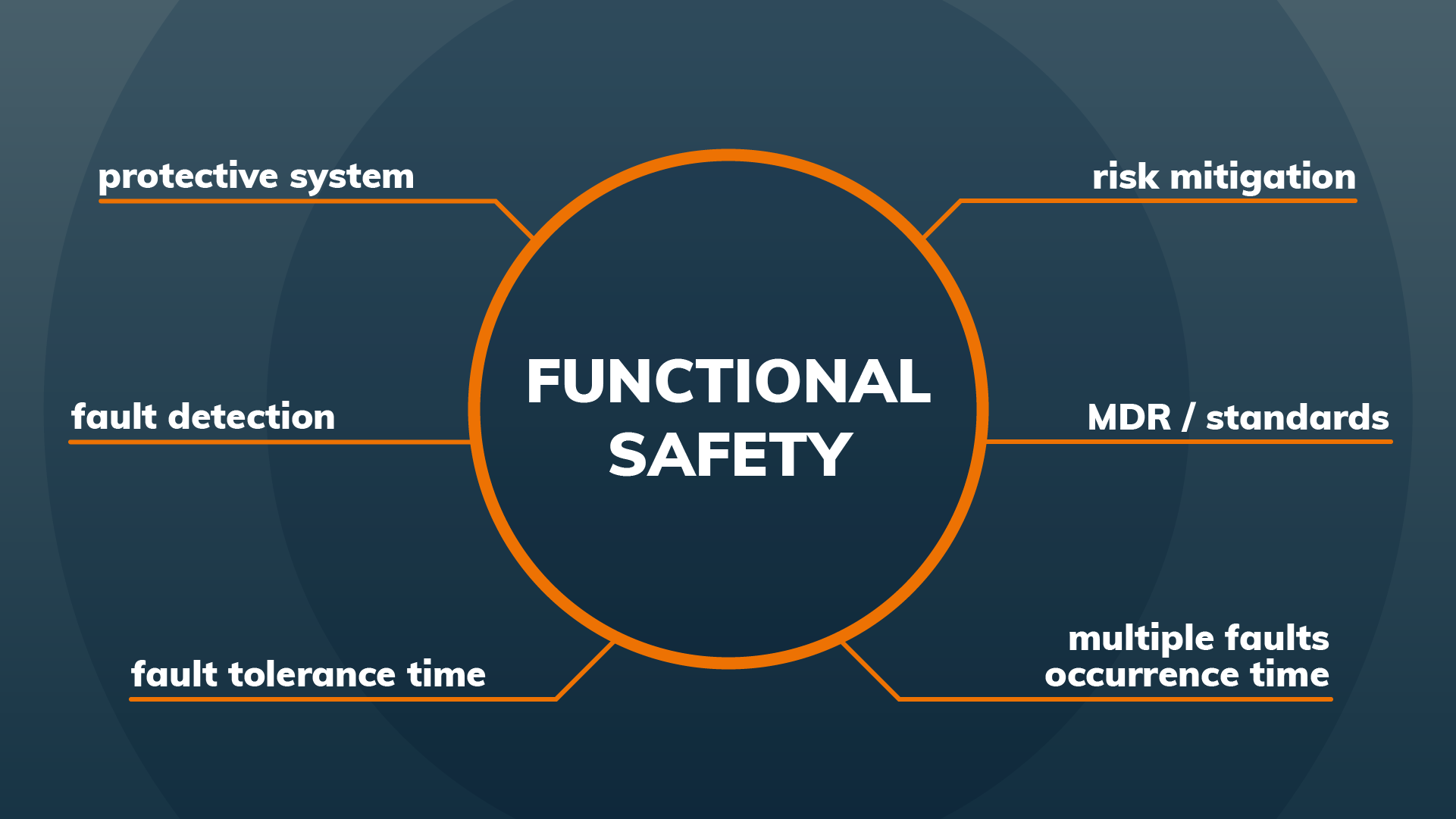Functional safety for medical devices according to MDR: Requirements and example of implementation

What the automobile or process industries have known as functional safety for many years is now covered in the MDR (Medical Device Regulation) for the first time as well. The MDR requires that aspects of functional safety are sufficiently taken into account when developing products. This applies both to new medical devices and medical devices that are already approved on the EU market.
And even though the MDR transition deadlines have recently been repeatedly extended, there is a pressing need for manufacturers to take action in order to secure approval on the EU market. We launched a comprehensive investigation into the functional safety of an already approved AED for one customer – and developed an effective process for assessing functional safety.
What actually is functional safety?
A medical device malfunctioning can be the difference between life and death. Therefore, the aim has to be that the device works reliably and that technical faults that may cause a danger are quickly detected, and countermeasures initiated. Accordingly, safety functions that avoid endangering the patient must be planned for during development. Potential hazardous situations must be identified, and the subsequent risks analyzed. In addition, risk-mitigating measures must be in effect throughout the entire life cycle of the device, for example by
- offering regular software updates,
- the use of particlarly high-quality, safe components or
- the use of monitoring mechanisms such as watchdogs to control critical functions.
How is proof provided?
Most people don’t know that devices that are already approved do not always have to be tested again. It can also be demonstrated on the basis of existing documentation that functional safety has been sufficiently taken into account and that there is no need for technical action.
The guarantee of functional safety is implicit in some product standards for medical devices. This is exactly what a Corscience team has been working on. For an existing customer, our experts analyzed the complete conformity file and the technical documentation, reviewed relevant standards and concluded that the AED in question meets the functional safety requirements, such as ensuring the essential performance features according to the relevant product standard. The likelihood of failure due to initial or multiple faults as well as the time until the fault is detected and the self-test intervals are sufficiently low, as is the fault tolerance time until a safe state is reached. The team was able to prove this thanks to a comprehensive GAP analysis. Accordingly, the customer can now apply for approval for the device in accordance with the MDR.
The key to approval of existing products being renewed in accordance with the MDR lies in
- the seamless documentation of technical specifications, test reports, data sheets and further documentation.
- a thorough risk analysis and a defined risk management plan in accordance with ISO 14971.
- conformity with standards (e. g. IEC 60601-1).
- calculating when initial and multiple errors are likely to occur.
- new tests if necessary.
We have applied this strategy to our own processes and use it to develop and approve new technologies.